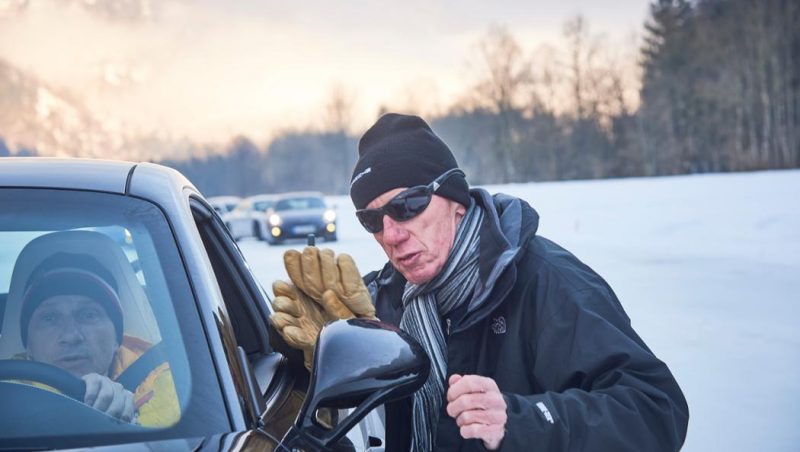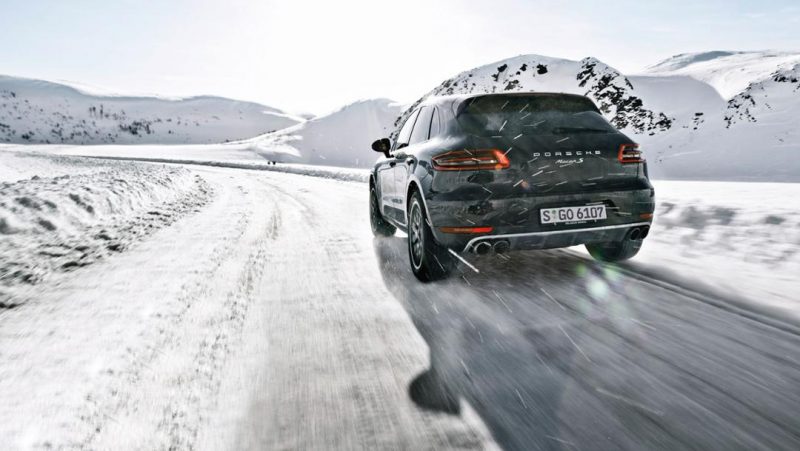In many parts of the world winter is upon us and for lots of our readers that means driving on snow and ice. For those of us that drive a Porsche year round, be it a Cayenne, Macan, 911, Panamera, Boxster, Cayman, 356 or anything else, there are a few simple guidelines we can follow to stay safer in the winter. Recently, Porsche’s Walter Röhrl sat down to talk through the techniques needed to safely handle our Porsches in snow and ice. While some may seem obvious, we suggest taking them to heart considering the source…

1. Pay Attention. In other words, be even more attuned to the car than usual, and concentrate completely on what you’re doing. Stay off your phone, don’t text or fool around and pay attention to the feedback your Porsche is providing via the steering wheel and the seat of your pants.
2. Slow Down! This seems the most obvious of all, but based on those we see on the road with us, it’s often overlooked. Röhrl says, “Winter conditions reduce the amount of friction on the road, which means a dramatic drop in grip. So you have to slow down. Otherwise, you’ll have problems when you brake or hit the next curve.”. He goes on to remind us that even though many of our Porsches have all-wheel drive systems that provide better grip when accelerating on slick surfaces, they do nothing for us when trying to slow down. In fact, the opposite is true due to more mass. “We shouldn’t forget that mass generally keeps moving straight ahead. And it doesn’t matter whether the engine transfers its power to one or both axles. That doesn’t affect the braking power.”

3. Don’t Take Momentum Into Corners. This might seem the same as above, but it’s not. As Röhrl says, “People aren’t immune to the laws of physics and neither are cars.” He’s seen it many times at various rallies around the world. All wheel drive, like that found on the Macan and Cayenne, divides power among the four wheels to decrease the ability of individual tires to lose their grip giving you more traction, at least in a straight line. That better traction doesn’t translate to a curve, but it does allow you to “step on the gas sooner and accelerate out of the curve“, says Röhrl.
4. Keep Steering Maneuvers To A Minimum. One of the accepted precepts of motorsport, and something that’s taught in almost every racing school we’ve attended, is the idea of “slow hands”. That’s what Walter’s saying here. Any movement or input, besides the bare minimum, come at a cost. The only exception to that rule says Röhrl are exaggerated or intended movements that allow Porsche’s driver assistance systems to help out.
5. Winter Tires Are A Must! In any part of the world where winter temperatures drop below 45 degrees fahrenheit on a regular basis you’re going to want Winter tires over All Seasons and definitely over Summer tires. Röhrl says that “Steering and driving maneuvers work only if the tires have enough grip on the road. So you absolutely have to have the right tread and rubber blend for cold temperatures.” It doesn’t matter what type of drivetrain you’re equipped with (front, rear or all-wheel drive) your Porsche needs traction to grip the road for accelerating and braking. As Röhrl says, “Nobody should think that all-wheel drive will make you safe in winter with summer tires.” In fact, during winter conditions, summer tires will only give about 1/10th of their performance capabilities. That means only 10% of your Porsche’s power gets transferred to the road and, more importantly, you only have about 10% braking power.
[Source: Porsche customer magazine Christophorus, No. 379]
